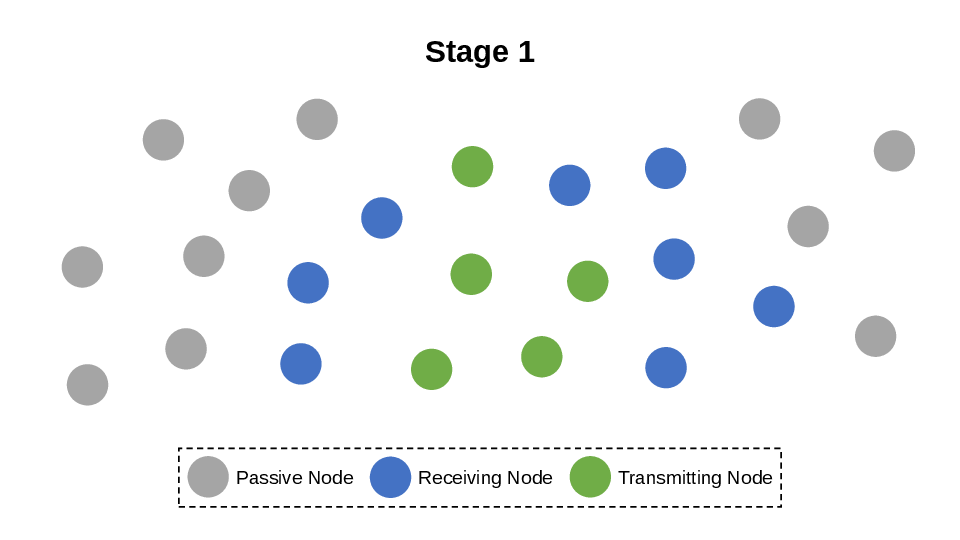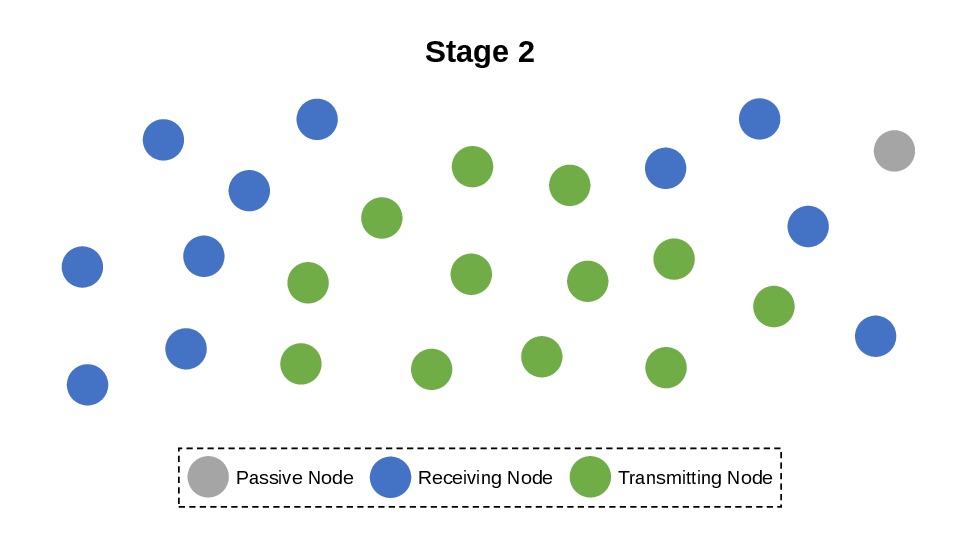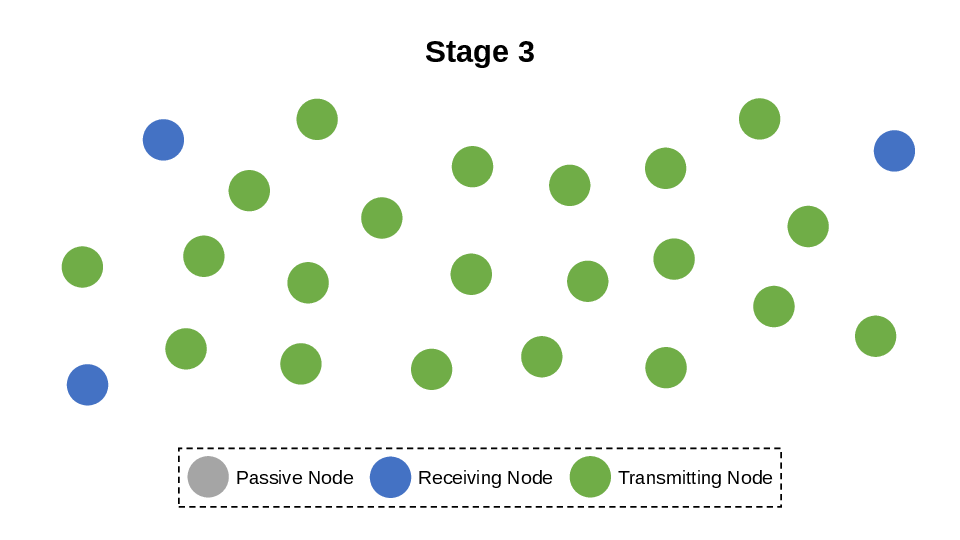Cooperative Broadcasting
Cooperative Broadcasting
In a Cooperative Broadcasting scenario, one node starts to transmit its message to its direct neighbours according to the achievable distance with its limited transmit power (Stage 0).

Once, the receiving codes are able to successfully decode the information, they will join transmitting and assist the initial node in the distribution of its information (Stage 1).

To verify the correctness of reception and to avoid distortions caused by transmissions of false decoded information, e. g. error-detecting codes could be utilized. Thus, not all receiving nodes will be transmitters in the next broadcast stage, but will have to receive once again in order to get the information right if they initially failed to do so. If more transmitters are active, the overall achievable distance will be larger due to the SNR gain resulting from the cooperative combination of the different transmitters’ powers. Hence, nodes that are located further away will be more likely reached. Theoretically, this cooperative broadcasting will continue, until each node is able to decode the information, so that the initial message, i. e. a routing information, is distributed to all nodes of the network. Practically, the process will be limited by a time-out.

It is depicted, that not all receiving nodes become transmitters in the directly following stage and that the overall achievable distance per stage is increased with respect to the prior.
